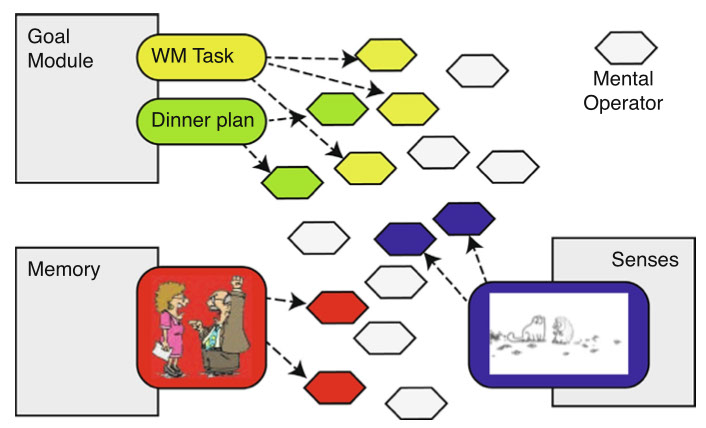Distraction, Mind Wandering, Multitasking
One of the myths of cognition is that humans can only do a single task at the same time. If that were true, there would not be a problem in multitasking.
Instead, in our experiments, we found that almost all people do multiple things at the same time, all the time, even in intensive working memory experiments.

Distraction can be modeled very well in PRIMs, because operators do not explicitly check the current goal (or skill). Instead, a current goal spreads activation to operators that are likely to be relevant for that goal.
However, other sources can also spread activation to operators. A striking visual distraction may activate an operator that moves attention to that distraction. A retrieved memory may activate thoughts associated with that memory. Or, if the task does not require immediate attention, a random thought can pop up.
We model this in PRIMS by allowing all these source to activate operators, and then see which one wins out. This method has been successful in modeling distraction, mind wandering and the effects of mental fatigue. See Huijser et al. (2018, mind wandering), Taatgen et al. (2021, mind wandering and distraction), and Herlambang et al. (2021, mental fatigue) for details.
